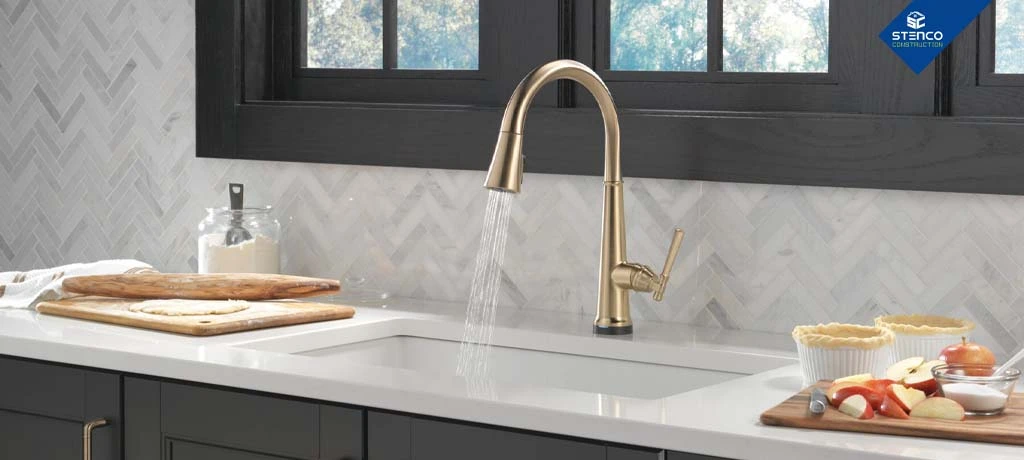CALL US FREE ESTIMATE
CALL US FREE ESTIMATE

The gentle cascade of water from a bathroom faucet or the steady stream in the kitchen sink, the performance of taps is instrumental in our comfort and convenience. Understanding low-pressure taps and making informed choices regarding their selection is key to ensuring that water flows smoothly and efficiently, even in environments with less-than-optimal water pressure. This comprehensive guide is designed to provide you with everything you need to know about low-pressure taps. From identifying them to exploring the various types, understanding the factors influencing their performance, making wise selections, and even upgrading your water system, we'll embark on a journey to demystify these essential fixtures and empower you to enjoy an enhanced and dependable water usage experience.

Low-pressure taps, or faucets, come in various types to suit different needs and preferences. The type of tap you choose can impact the water flow, style, and functionality. Here are some common types of low-pressure taps:
These are traditional, two-handle taps with separate hot and cold water handles. To open or close the water flow, turn the handles clockwise or counterclockwise. They compile a rubber washer against a valve seat to control the water flow. Compression taps are relatively simple but can develop leaks over time as the washers wear out.
Cartridge taps have a single handle for controlling water flow and temperature. They use a replaceable cartridge that contains all the necessary parts for regulating the water flow. Cartridge taps are known for their smooth operation and are often more durable than compression taps.
These taps use two ceramic discs that slide over each other to control the water flow and temperature. They are highly durable and are less prone to leaks compared to other types of taps. Ceramic disk taps often have a single lever for control.
Single-lever taps are versatile and easy to use. They have a lever that can be moved up and down to control water temperature and left and right to adjust the water flow. The design can vary, but the lever typically moves in a 90-degree arc.
Wall-mounted taps are fixed on the wall rather than the sink or countertop. They can have various mechanisms for controlling water flow, such as compression, ball, or cartridge. These taps are often used with vessel sinks or for a unique and modern look in bathrooms.
These modern taps use infrared sensors to detect the presence of hands and automatically dispense water. They are commonly found in public restrooms and kitchens to promote water conservation and hygiene.
To address low-pressure tap performance, it's essential to identify the specific cause of the issue, which may require professional assistance. Regular maintenance, cleaning, and occasional upgrades can ensure consistent water pressure and tap performance in your home. Here are some of the key factors that can impact low-pressure tap performance.
Accumulated sediment, mineral deposits, or debris within the plumbing pipes can restrict water flow to the tap. Over time, this can significantly reduce water pressure.
The size and length of the pipes that connect the tap to the main water supply can impact water pressure. Smaller or longer pipes can result in reduced pressure by the time the water reaches the tap. The type of material used for plumbing pipes can affect pressure. For instance, older homes may have galvanized steel pipes that tend to corrode and reduce flow over time.
The design and quality of the tap or faucet itself can impact water pressure. Low-quality or older faucets may need to be more efficient at maintaining water pressure.
Leaks in the plumbing system can reduce water pressure by diverting water from the tap. Inspect your plumbing for any leaks and address them promptly.
Older plumbing systems may have deteriorated over time, leading to reduced water pressure. Upgrading or replacing old pipes and fixtures can improve tap performance.
In some regions, water pressure may fluctuate seasonally, especially in areas with cold winters where freezing can affect pipes.

The installation and maintenance of low-pressure taps are similar to regular taps but with specific considerations to address the issues associated with low water pressure. Here are the steps for both installation and maintenance.
Understanding of low-pressure taps can lead to improved water efficiency and a higher quality of life in your home. In this comprehensive guide, we've delved into the world of low-pressure taps, exploring their types and the factors influencing their performance. We've also discussed the importance of choosing the right low-pressure taps, installation considerations, maintenance, and potential solutions for improving water pressure in your home. By making informed choices about these essential fixtures, you not only ensure a smoother daily water usage experience but also contribute to a more environmentally responsible and sustainable approach to water consumption.
Ready to turn your renovation and remodeling dreams into reality? Whether it's a new home or a renovation project, we've got you covered. Contact us today, and let's bring your vision to life. Get started on your next project now.
No matter what type of project you have, we can help